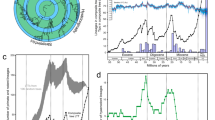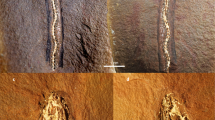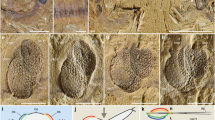Abstract
Amphipithecus mogaungensis, from the Late Eocene of Burma, is shown to be an independently evolved form; it does not seem to be related to the New World omomyids, nor is it a close relative of the Early Oligocene catarrhines from Fayum. It may possibly be a lemuroid.
This is a preview of subscription content, access via your institution
Access options
Subscribe to this journal
Receive 51 print issues and online access
$199.00 per year
only $3.90 per issue
Buy this article
- Purchase on SpringerLink
- Instant access to full article PDF
Prices may be subject to local taxes which are calculated during checkout
Similar content being viewed by others
References
Colbert, E. H., Amer. Mus. Novit., No. 951 (1937).
Colbert, E. H., Bull. Amer. Mus. Nat. Hist., 74, art. 6 (1938).
Simons, E. L., in Evolutionary and Genetic Biology of Primates, 1 (edit. by Buettner-Janusch, J.) (Academic Press, New York, 1963).
Simons, E. L., Nature, 205, 135 (1965).
Simons, E. L., and Pilbeam, D. R., Folia Primat., 3, 81 (1965).
Simons, E. L., in Internat. Encyclopedia of Social Sciences (Macmillan, New York, 1968).
Hill, O. W. C., in Taxonomy and Phylogeny of Old World Primates (edit. by Chiarelli, B.) (Rosenberg and Sellier, Torino, 1968).
Van Valen, L., Amer. J. Phys. Anthr., 30, 2 (1969).
Simons, E. L., in Probls. Act. de Paleont., Coll. Int. Cent., Nat. Recherche Sci. (1967).
Biegert, J., in Classification and Human Evolution (edit. by Washburn, S. L.) (Aldine, Chicago, 1963).
Author information
Authors and Affiliations
Rights and permissions
About this article
Cite this article
SZALAY, F. Late Eocene Amphipithecus and the Origins of Catarrhine Primates. Nature 227, 355–357 (1970). https://doi.org/10.1038/227355a0
Received:
Revised:
Issue date:
DOI: https://doi.org/10.1038/227355a0



